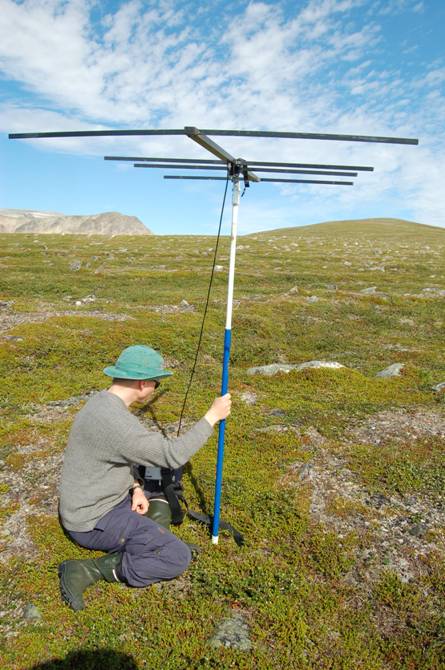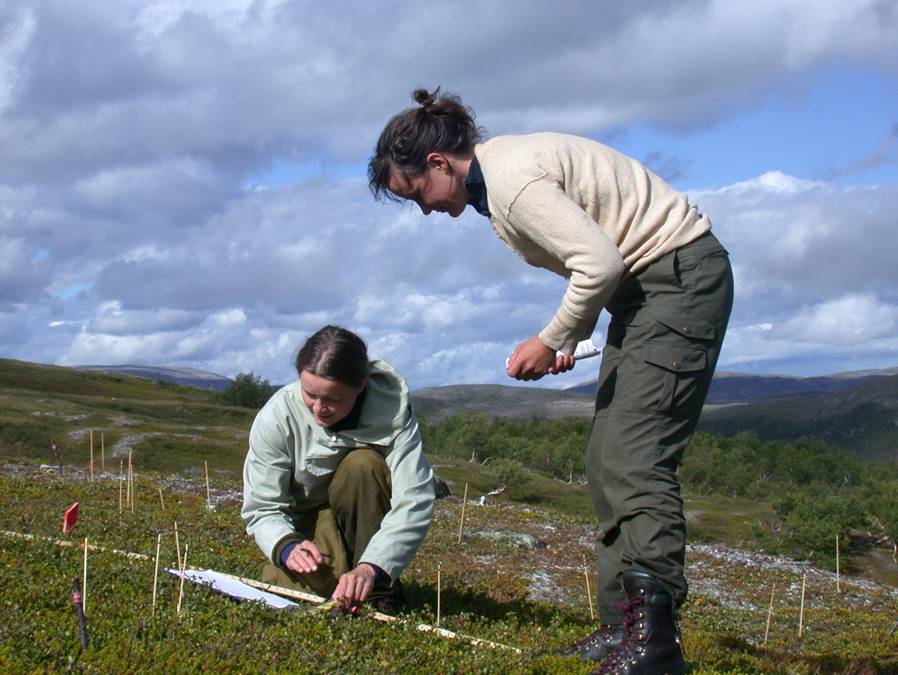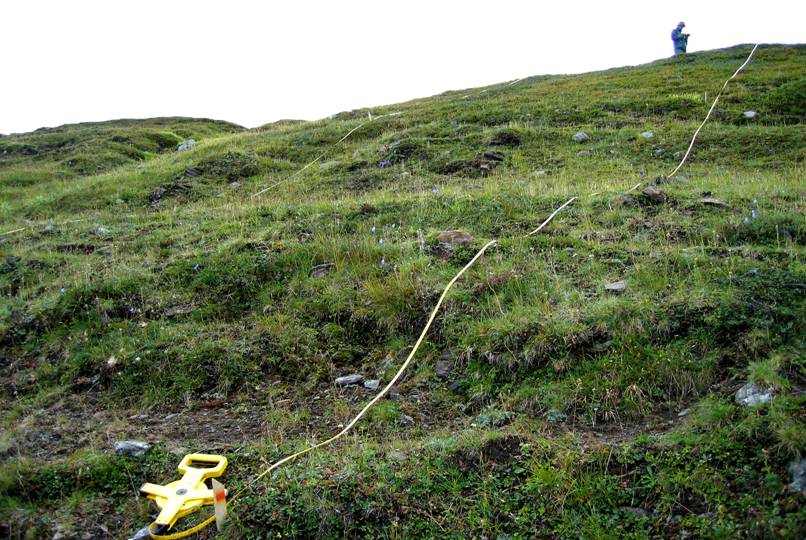Plant quality and reindeer - interactions in the reindeer summer pastures; Ph.D.-Project: Marianne Iversen |
|
Plant phenology in the reindeer summer pastures |
|
This PhD-project deals with plant-reindeer interactions in the summer pastures in Finnmark, Northern Norway , with focus at plant quality defined by phenology and vegetation composition. By plant phenology we mean the timing of periodic biological events of the plant in relation to environmental cues. Examples on such events are germinating, bud-formation, flowering and withering. Examples on important environmental cues are snow cover or climate conditions. Also grazing can influence plant phenology. The biotic and abiotic factors that influence the plants seasonal development will always differ at temporal and spatial scales. This again has implications for interactions with pollinators, seed dispersers and herbivores attracted by young, nutrient rich food and reproductive organs. Thus - in the ecosystem, plant phenology implies the plants dynamic interaction with its ecosystem, changing through the season. |
|
The importance of plant phenology contra plant composition for reindeer habitat use |
|
Plant phenology is regarded as an important factor for food selection and body weight in northern ungulates. Young plants represent easily digested plants with a high concentration of nourishments, such as nitrogen an proteins, and little fibre and tannins so that the net energy yield is high. Plant phenology has shown to be an important factor in reindeer feeding preference and productivity, but there are also studies concluding that the quantities of plants are more important. Investigations about these relationships have not been done in Finnmark before. By the use of GPS-collared reindeers we want study the importance of plant phenology together with plant composition for reindeer habitat use . Plant phenology is measured as morphological stages of leaves and flowers of common species in areas. Plant composition is measured as percentage cover of functional plant groups and dominating species. Other factors such as ticket-height and feces are also measured. Vegetation analyses are done maximum 3 days after the reindeer was there. The usage data is calculated by using First-passage-time method.
Phenological strategies of functional plant groups at temporal and spatial scales Different species can have different phenological responses along the same environmental gradients. The species-specific phenological response is an important characteristic of the plants strategy because it influences the plants ability for resources capture, growth and reproduction. When studying vegetation as a dynamic factor in ecosystem context, it has been shown useful to define groups of plant functional types. Such groups can enable us to generalise about vegetations interaction with its environment including herbivory. Syntheses of growth forms and plant phenological strategies have been done to a very limited extend, but there has been shown partly similar phenological patterns of species belonging to the same growth forms. Expected phenological traits could be that slow growing; more stress-tolerant species like evergreens would have less defined phenological peaks and show more various patterns of vegetative and flowering phenology. More nutrient demanding, faster growing species would show a marked respond of leaf production to periods of maximal potential productivity and flower after maximum production. This difference in responsiveness also leads to the predictions of higher patchiness in phenological patterns for the more “responsive” grasses and herbs. |
|
| Downloading from the GPS-collars of the coordinates that are visited 1-3 days later. | |
In this second study I focus on the variation of plant phenology in a A nested hierarchical design is used. I ask how the phenological pattern reveal through the season and along the altitudinal gradient, and if there are contrasting phenological patterns between functional plant groups. |
|
Plant phenology is measured repeatedly during the summer on marked individuals of common species. |
|
|
Effects of reindeer grazing on plant phenology |
|
I will also look at the effect of different reindeer densities on plant phenology in 6 summer grazing districts in Finnmark. This study is done at multiple spatial scales. The study species are three graminoids: The preferred grazing species Avenella flexuosa , the intermediate Carex bigelowi and the non-preferred species Nardus stricta . The study is carried out along slopes in habitats assumed to be attractive forage sites for reindeers.
|
|
Measurements of plant phenology of three common species are done along topographical gradients in districts with contrasting reindeer densities.
|
|

 landscape-perspective of contrasting functional groups defined by their differing ecosystem properties. Measures on morphological defined phenological stages of leaves and flowers are done repeatedly during a summer on common species along an altitudinal gradient, where differing aspects are represented.
landscape-perspective of contrasting functional groups defined by their differing ecosystem properties. Measures on morphological defined phenological stages of leaves and flowers are done repeatedly during a summer on common species along an altitudinal gradient, where differing aspects are represented.